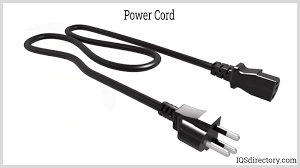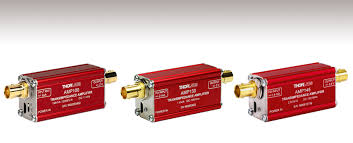Power cord is one of the most important parts of any electronic device. Without a power cord, your gadgets like laptops, TVs, or kitchen appliances won’t work at all. Power cord comes in many shapes and sizes, and it carries electricity safely from the power outlet to your device. Choosing the right power cord is not just about matching the plug; it is about ensuring safety, durability, and efficiency. Using the wrong type of power cord can damage your device or even cause accidents. Many people overlook the importance of a good power cord, but it is the hidden hero that keeps your electronics running smoothly every day. Knowing the basics of power cords can save you money, prevent accidents, and improve the lifespan of your devices.
Power cord is not just a piece of wire; it is carefully designed to handle specific voltage and current. Some power cords are thick and strong for heavy appliances, while others are thin for small gadgets. The length of a power cord also matters because long cords can lose some power, while very short cords can limit your device placement. You also need to pay attention to plug types, insulation material, and safety certifications when buying a power cord. Using a damaged power cord can lead to sparks, short circuits, or electric shocks. Moreover, organizing and storing power cords properly can prevent tangling and breakage. By understanding the features and safety tips of power cords, you can make smart choices for your home or office and keep your electronics working efficiently.
Power Cord
Power cord is an essential part of every electronic device. Without a power cord, gadgets like computers, TVs, kitchen appliances, and lamps cannot function. Power cord carries electricity safely from a wall outlet to your device. It might look simple, but using the right power cord is very important for safety, device life, and performance. A wrong power cord can damage your device or even cause accidents like sparks or electric shocks. People often ignore power cords, but they are very important for everyday life. Understanding power cords helps you choose the right one, use it safely, and make your devices last longer.
Power cord comes in different types, sizes, and lengths. Some are thick for heavy appliances, and some are thin for small devices. The length of a power cord also matters because very long cords can reduce power, while very short cords can limit device placement. You also need to look at plug types, insulation material, and safety certifications before buying a power cord. Using a damaged or low-quality cord can lead to short circuits, shocks, or fire hazards. Proper storage and careful handling can prevent damage and make the cord last longer. By learning about power cords, anyone can make safer and smarter choices for their electronics.
Types of Power Cords
There are many types of power cords, and each type serves a different purpose. Some common types are two-prong cords, three-prong cords, appliance cords, and extension cords. Two-prong cords are often used for small gadgets like phone chargers or lamps. Three-prong cords are stronger and safer because they have a grounding wire, which prevents shocks and damage to devices. Appliance cords are thick and strong for heavy electronics like microwaves or refrigerators. Extension cords are used to increase the reach of electricity, but not all extension cords are safe for every device. Knowing the type of power cord you need helps prevent accidents and improves device performance.
How to Choose the Right Power Cord
Choosing the right power cord is not just about matching the plug. You need to check the voltage and current rating of your device and match it with the power cord specifications. Using a cord with lower ratings than your device needs can cause overheating and damage. Also, consider the length of the cord. A cord that is too long can reduce the efficiency of power transfer, while a short cord may not reach your device. The insulation quality and material are also important for safety. Make sure the cord has certifications from trusted safety authorities. A high-quality cord is an investment for safety and longevity of your devices.
Power Cord Safety Tips
Power cord safety is very important for every home and office. Always check your power cord for damage before use. Avoid using cords with exposed wires, broken plugs, or melted parts. Do not bend the cord too much or wrap it tightly, as it can damage the internal wires. Keep cords away from water, heat, and sharp objects. Never overload an extension cord, and do not connect too many devices to a single outlet. Using power cords carefully can prevent accidents, electric shocks, and fires. Teaching children and family members about power cord safety is also very important.
How to Extend the Life of Your Power Cord
Power cords last longer when they are handled carefully. Avoid pulling the cord from the plug; always pull from the plug head. Store cords loosely coiled instead of tightly wrapped. Keep cords away from pets that may chew on them. Clean the cord occasionally to remove dust and dirt. Using cord organizers or clips can prevent tangles and breaks. If you notice any damage, replace the cord immediately rather than trying to repair it with tape. By taking simple steps, you can make your power cords last years and keep your devices safe.
Common Power Cord Mistakes to Avoid
Many people make mistakes that reduce the life of a power cord or risk accidents. Using the wrong type of cord for heavy devices is a common mistake. Overloading the cord with too many devices is dangerous. Bending, twisting, or stepping on cords can damage the internal wires. Using cords near water or heat is risky. Ignoring signs of wear and tear can lead to accidents. Avoiding these mistakes will make your cords safer and more reliable.
Power Cord vs Extension Cord
Many people confuse power cords and extension cords. A power cord comes with the device and connects it to a power source. An extension cord increases the reach of electricity from an outlet. Extension cords are temporary solutions, not replacements for proper power cords. Using an extension cord with heavy appliances can be dangerous if the cord is not rated for high power. Always check the rating before using an extension cord and avoid overloading it. Understanding the difference keeps your devices safe and prevents accidents.
Conclusion
It is important to know when a power cord needs replacement. Signs include exposed wires, frayed insulation, melted plugs, sparks, or unusual heat. If your device loses power suddenly, the cord may be the reason. Using damaged cords is very dangerous and can cause fires or shocks. Replace the cord immediately if you notice any of these signs. Regular checks of cords help keep your home and devices safe.
FAQs
What is a power cord?
A power cord is a cable that connects a device to a power source and delivers electricity safely.
Why is the right power cord important?
The right cord ensures your device works properly and prevents accidents like electric shocks or fires.
How long do power cords last?
With proper care, power cords can last several years, but damaged cords should be replaced immediately.
Can I use any extension cord?
No. Always choose an extension cord with proper voltage and current rating for your devices.
How do I store power cords safely?
Coil cords loosely, avoid tight wraps, keep them away from water and pets, and use organizers to prevent tangling.


